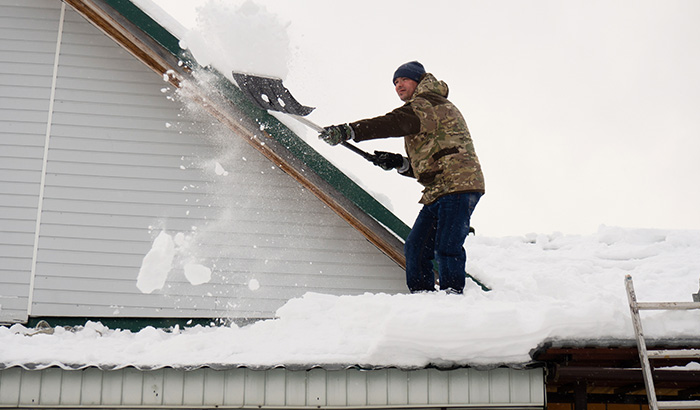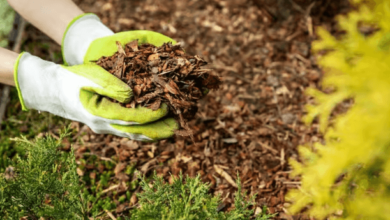How to Protect Your Roof from Ice Dams in the Winter?

Ice dams are a common winter roofing issue that can lead to significant damage to both the roof and the interior of a home. These ice formations occur when warm air in the attic causes snow on the roof to melt, and the water refreezes near the eaves, creating a barrier that prevents proper drainage. Over time, this trapped water can seep under shingles, leading to leaks, water damage, and mold growth. Preventing ice dams is crucial for protecting your roof during the winter months. We will explore several strategies homeowners can implement to protect their roofs from ice dams, including proper insulation, ventilation, and roof maintenance from GRACCO.
Ways to protect your roof
- Ensure Proper Attic Insulation
One of the most effective ways to prevent ice dams is to ensure your attic is properly insulated. Ice dams form when heat escapes from the home’s living areas into the attic, warming the roof and causing snow to melt. By keeping the attic space cold, the snow on the roof remains frozen, reducing the likelihood of ice dams forming. Adding insulation to the attic floor helps prevent heat from escaping through the ceiling and warming the roof deck. Homeowners should aim for at least 12 to 15 inches of insulation in the attic, depending on the climate. Inadequate insulation allows heat to rise into the attic, causing uneven snow melting on the roof and contributing to ice dam formation. By ensuring proper insulation, homeowners can create a consistent temperature on the roof’s surface, preventing snow from melting and refreezing at the eaves.
- Improve Attic Ventilation
In addition to insulation, proper attic ventilation is essential in preventing ice dams. Ventilation helps regulate the temperature in the attic by allowing cold air to enter through soffit vents and warm air to escape through ridge vents. This airflow helps maintain a cold roof surface, even when the temperature inside the home is warm. Warm air can become trapped in the attic without proper ventilation, leading to uneven melting of snow and the potential for ice dams. Homeowners should ensure that their attic has adequate intake and exhaust vents to promote good airflow. The goal is to keep the attic temperature as close to the outdoor temperature as possible. A well-ventilated attic allows the roof to remain cold and prevents the formation of ice dams. If you are unsure whether your attic has sufficient ventilation, consulting with a professional to assess your current ventilation system and make any necessary adjustments may be helpful.
- Keep Gutters and Downspouts Clear
Clogged gutters and downspouts can contribute to the formation of ice dams by preventing proper drainage of melting snow. When gutters are full of leaves, debris, or ice, water cannot flow away from the roof and can back up and refreeze near the eaves, creating an ice dam. Homeowners should clean their gutters and downspouts in the fall, before winter weather sets in, to ensure they are free from blockages. Additionally, installing gutter guards can help prevent debris from accumulating in the gutters during the winter months. Ensuring that downspouts are clear and directing water away from the foundation is also important. When gutters and downspouts are well-maintained, water is more likely to drain properly from the roof, reducing the risk of ice dams forming.
- Install Ice and Water Shield
For added protection against ice dams, homeowners may consider installing an ice and water shield under their shingles. This waterproof membrane is applied along the roof’s edges, particularly around eaves, valleys, and other vulnerable areas. Ice and water shields help prevent water from seeping into the home, even if an ice dam forms. It provides an additional barrier between the roof and the water, helping to protect the roof deck and interior from leaks. While this solution won’t prevent ice dams from forming, it can significantly reduce the damage caused by ice dams and is a good preventative measure for homes in regions with harsh winters. If you are planning a roof replacement or repairs, installing an ice and water shield is a valuable addition that can help safeguard your home from winter weather-related damage.
- Use a Roof Rake to Remove Snow
One simple yet effective way to prevent ice dams is to use a roof rake to remove snow from your roof after heavy snowfall. By clearing the snow from the roof’s surface, particularly near the eaves, homeowners can prevent the snow from melting and refreezing into ice dams. A roof rake is a long-handled tool that allows you to pull snow from the ground, reducing the need to climb onto the roof and risk injury. It’s important to be cautious when using a roof rake, as improper use could damage shingles or other roofing materials. Focus on removing the first few feet of snow near the eaves, as this is where ice dams are most likely to form. Regularly removing snow from the roof throughout the winter can help prevent ice buildup and reduce the risk of ice dams.
- Prevent Heat Loss Around Chimneys and Vents
Chimneys, skylights, and vents are common areas where heat loss occurs, contributing to the formation of ice dams. To prevent heat from escaping and warming the roof, homeowners should ensure that these areas are properly sealed and insulated. Installing chimney caps and insulating around vents can help reduce the warm air that escapes into the attic. Any gaps or cracks around chimneys or vents should be sealed with caulk or weatherstripping to prevent warm air from entering the attic. By minimizing heat loss in these areas, homeowners can help maintain a more consistent temperature in the attic and reduce the likelihood of ice dams forming.
Preventing ice dams during winter is crucial for protecting your roof and home from water damage. By ensuring proper attic insulation and ventilation, keeping gutters and downspouts clear, installing ice and water shields, and using a roof rake to remove snow, homeowners can take proactive steps to reduce the risk of ice dams. Additionally, sealing and insulating around chimneys and vents helps prevent heat loss that contributes to uneven snow melt on the roof. With the right preventative measures, homeowners can protect their roofs from ice dams and avoid the costly repairs associated with winter weather damage.




